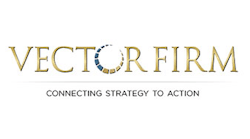This article originally appeared in the September 2021 issue of Security Business magazine. When sharing, don’t forget to mention Security Business magazine on LinkedIn and @SecBusinessMag on Twitter.
After just three weeks of cold calling, I was ready to change careers. Not only was I not having any success with cold calls, but I also hated it. I was miserable. The only advice my boss had was “just keep showing up and it will happen.” For an analytical young man like I was, I needed more. I needed to understand how to be a better cold caller. I needed a plan.
I called a mentor of mine to ask him how to improve my cold calling skills. His answer was ingenious: “Find one happy customer and ask for referrals. As you win more customers, keep asking for referrals. Within a year, you will never have to make a cold call again.”
He was right, but it was 1995 and I was selling copiers. Selling complex security systems in 2021 is different. While referrals can be powerful accelerators to developing business, asking for referrals needs to be done in a much more sophisticated way today.
Here are four guidelines on how to ask for referrals:
1. Understand the “good-better-best” method. The difference between the stages is the level of specificity of your request. If you ask for general introductions, the pool of candidates is too great, and you force your client to think too much. The more specific your request, then easier it is for your client to help you. Good: “Do you know of any other companies that you think we would be able to help?” Better: “Can you introduce me to any IT managers who work in the other hospitals in the area?” Best: “Can you introduce me to Susan Janson at Sunrise Healthcare?”
It is worth noting that even the “good” method above is significantly better than not asking for referrals at all.
2. Research their LinkedIn contacts before your meeting. Knowing a client’s LinkedIn contacts before a call or meeting at which you will be asking for referrals is like knowing the questions to an exam ahead of time. You may not have the answers, but you are way ahead of the game.
As great as this technique is, it can be delicate and requires a well-defined approach. First, filter the list – you do not want to show up with 2,500 names. Search their contacts by the types of descriptors that are important to you, such as role or company. Narrow the list down to five or less names. When starting the conversation, let your client know that you reviewed their LinkedIn profile to save some time. Then, refer to the guideline above and ask away!
3. Ask for the best and most appropriate introduction. Ideally, they will be able to introduce the two of you in person, but that may not be appropriate or possible. If an in-person introduction is not appropriate, then ask for an email introduction. Whether in-person or by email, the benefit of receiving a formal introduction is that your prospective future customer will feel a commitment to your client to meet with you. At worst, simply asking for the permission to use their name is a big win.
4. Become known for your “thank you.” There is a mortgage broker in our neighborhood who gives away a set of unique cooking knives that cost hundreds of dollars when someone refers a certain amount of business to him. He has become known by his “big thank you” and people seem to line up to refer business to him. Become known as that type of professional. For any help, send a thank you note and maybe a small gift card; however, if someone refers a prospective customer to you that results in a huge sale, then make a big deal out of your thank you.
Chris Peterson is the founder and president of Vector Firm (www.vectorfirm.com), a sales consulting and training company built specifically for the security industry. To request more info about the company, visit www.securityinfowatch.com/12361573.




